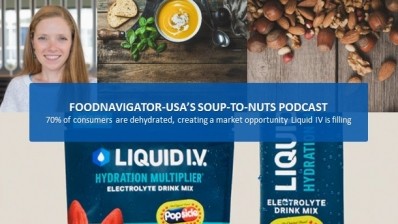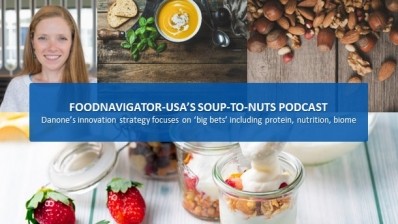Soup-To-Nuts Podcast: How is the M&A landscape evolving for food & beverage?

According to international law firm Nixon Peabody Counsel Shaziah Singh, who works extensively in mergers and acquisitions, the food and beverage industry will see an “extreme increase” in M&A activity in the next 16 to 24 months – and who is buying will increase and may change.
In this episode of FoodNavigator-USA’s Soup-To-Nuts podcast, Singh shines a light on how the M&A landscape is evolving in 2024, the factors that are influencing it, who is active – including predictions on when private equity may reenter the game – and advice for both buyers and sellers looking for the best deal.
[Editor’s Note: Never miss an episode of FoodNavigator-USA’s Soup-To-Nuts podcast – subscribe today.]
Why did deal making slow and when will it pick up again?
Characterizing the past two years as “tough” for M&A, Singh is cautiously optimistic about the coming year, while also acknowledging that for the past few quarters stakeholders have prematurely predicted deal flow would resume in the food and beverage space.
“We kept hearing rumblings” that dealmaking would pick up in 2023, but “as M&A lawyers, we didn’t really see that. So we were a little concerned – even going into Q1,” said Singh. “But things are picking up again … and there is a lot more deal flow.”
Still, she notes, many of the challenges that slowed flow in 2023 persist today. These include high inflation and interest rates, which Singh says should come down in the next six months. Also many of the challenges that emerged in the pandemic, such as labor challenges, high operational costs and supply chain issues, remain.
The election cycle can also influence M&A activity, but Singh predicts this presidential race may not have as dramatic an impact in previous years, in large part because President Joe Biden and Former President Donald Trump are both known quantities.
Is private equity ready to return to the game?
Another shifting factor that contributed to the slowdown but which may be about to reverse course is the extent to which private equity is willing to invest in food and beverage. Singh explains many private equity players pulled back in 2023, but her sources suggest they may be ready to re-enter the game – although their strategy may be different this time around.
“In general, when they are doing a deal, it is taking so much longer to get the deal done,” because they are so focused on doing their financial diligence, said Singh. She noted that during the pandemic she might close five or six deals for one private equity fund, but now she says she is lucky to do one a year.
She also notes that private equity investors are more interested now than during the pandemic in ensuring a company is the right fit and they have a post-acquisition integration plan in place. She explained that many deals closed during the pandemic did not sufficiently consider post-acquisition and now many companies that were bought are struggling.
While private equity has sat on the sidelines, strategics, including big CPG companies, have been actively reshaping their portfolios through mergers and acquisitions, said Singh.
“Strategic buyers are still interested in doing a lot of M&A, but they are shedding a lot of their non-core brands, where multiples were very high, to refocus on their portfolio assets,” she explained.
Better-for-you, premium & weight management products pique buyers’ interest
According to Signh, strategics and private equity investors active in or re-entering the investment space are both interested in brands and businesses that meet consumer demand for better-for-you or premium products, as well as weight management solutions.
She explained that investors want the same things as consumers, which includes healthier products that support their wellness – including foods and drinks that offer functional benefits to improve immunity, digestive health and mental well-being.
The uptick in consumers using weight loss drugs is also driving demand for healthier options – especially high-protein, high-fiber and low-sugar products.
“Another area that investors are really focused in is premium,” which is a growing trend among consumers who want an experience or sense of exclusivity, Singh added.
On the flip side, Singh said, there are also a few areas investors are shying away from, including baked goods, snacks and dairy and meat products.
Tips for making a deal
Startups or small- and mid-sized businesses hoping to cash out as investor interest picks back up, will need to remain patient and look for ways to differentiate themselves as Singh says the bar for acquisitions is higher and buyers are more critical.
She suggested companies set themselves apart by investing in digital enhancements that can drive consumer engagement and capitalized on increased spending.
She also cautioned that the days of a startup selling to a strategic in two or three years have ended, and in general the earliest a startup can anticipate an exit is around year five.
As for advice for buyers, Singh recommends strategics and private equity investors think carefully about post-acquisition and consider how to successfully manage or integrate a brand or business that they acquire.














